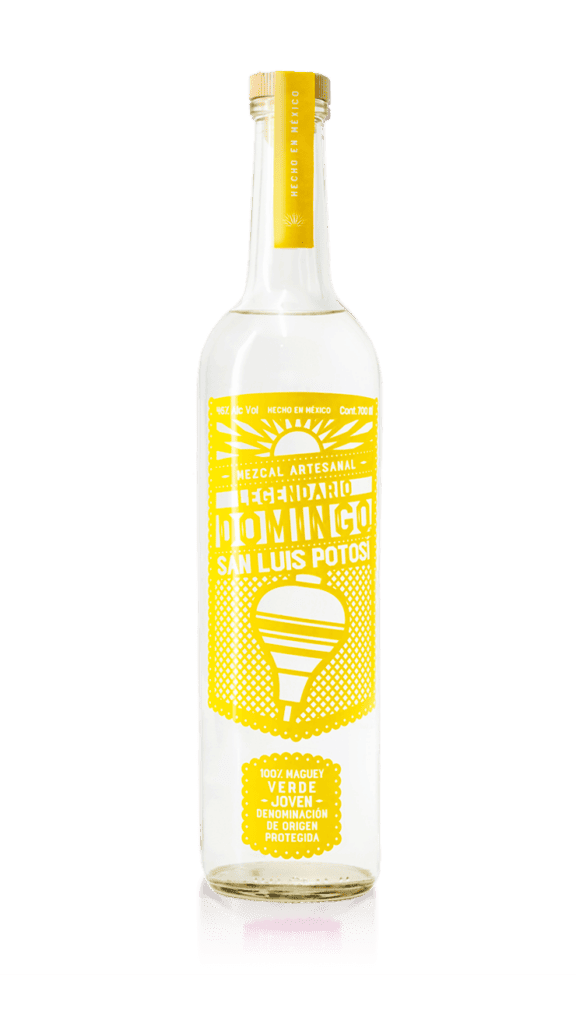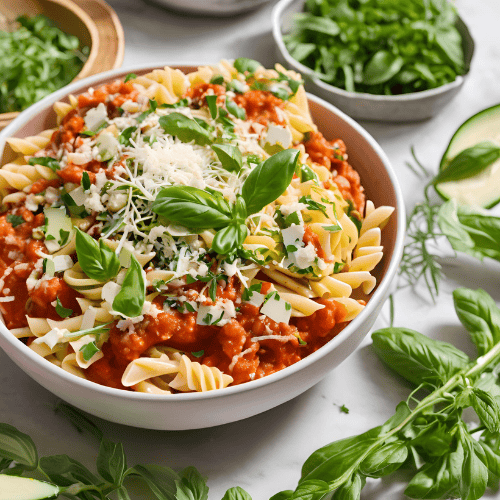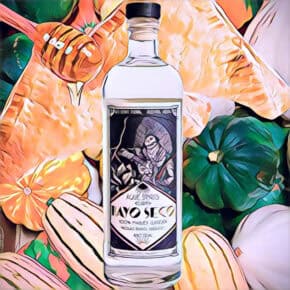In our ongoing series that highlights what to pair with mezcal, Tess Rose explores some of the best mezcals from San Luis Potosi.
As summer turns into tall, those of us with gardens know that some plants and colder weather crops continue to offer up fruit and herbs. During this amorphous season, it’s common to get a handful of mixed greens, late tomatoes and chilies, and maybe a squash or two–although your garden will of course look different depending on where you are in the world.
Keeping with the idea of not being tied to specifics, this perfect pairing is for a category of mezcal, rather than a specific bottling. Before you start gathering ingredients for your pasta, absolutely taste your mezcal of choice and write down the first flavors it evokes. Then tailor the rest of your ingredient list to pair with those flavors. As a reminder, you can go back to these three basic pairing principles:
- If it grows together, it goes together. For example, if the mezcal evokes a flavor of corn, try throwing some white beans into the pasta–corn and beans are famously grown together.
- Like with like. For example, if the flavors remind you of citrus, try adding some lemon zest or juice.
- Opposites attract. If the flavors come off as sweet, try adding something bitter (like broccoli rabe) to accentuate the sweet notes.
Feel free to use one or all of these principles–the main idea is to break out of being too literal, so if you taste notes of chipotle, rather than making a chipotle heavy dish, use flavors that complement chipotle in the dish.
The mezcal – all about Salmiana
It’s fun to try spirits that are less common, which absolutely applies to the handful of agave distillates from San Luis Potosi. Over the past couple of years, the selection of San Luis Potosi mezcal has gained some real superstars, including the insanely good bottlings from Campanilla, and the newest release from Legendario Domingo or Alma Mezcalera salmiana. The tried and true offering from Derrumbes is a favorite as well (and at extremely good value). It’s impossible to accurately describe all of these spirits with a few words, as each one has a unique personality and nuance. That being said, two of the characteristics I often find in my favorite agave spirits from San Luis Potosi are high acidity and herbal notes. High acidity makes a spirit well-suited for pairing in general–literally getting your digestive juices flowing, and offering a prepped palate for other flavors. The herbaceousness also provides a nice background for savory pairings, especially a vegetable and herb-forward pasta dish.




This dish represents my way of cooking. As someone who grew up largely without traditional recipes passed down through generations, what I inherited from my mom and aunties was a method of cooking–how to take whatever you have on hand and create something delicious. This adaptive style cooking also tells a story about heritage: one that is characterized by multiple forced migrations and the adaptation and resilience of refugees.
Adaptive cooking is well suited to this time of year, as we begin the shift from overflowing garden produce to heartier crops and preserved foods. We often have an overabundance of vegetables, but of mismatched odds and ends: a handful of tomatoes, some withered chilies, green onions that have been in the crisper for a month, etc. Pasta is very forgiving for this type of cooking, allowing you to create a harmony of flavors with what you have on hand, while cleaning out the corners of the fridge, kitchen, and garden.
Recipe:
If ever there were a recipe to make your own, this is it. If you are the type of person who likes to follow a recipe to the letter, do not go out and buy these ingredients, just skip this one.
Ingredients
- One pound pasta of choice (I used orzo)
- 3 tablespoon tallow or other cooking oil
- 1 quart tomatoes
- Hot chilies, to taste
- 1-2 bell peppers
- One bunch green onions
- Garlic, to taste
- 1 large or 2 medium zucchini
- 3 tablespoons butter (I used ramp butter I made in spring and had in the freezer)
- 8 oz feta or other cheese
- Handful of fresh herbs
Method
- boil and salt a large pot of water
- cut and cook tomatoes in tallow or your oil of choice on medium heat for 6-7 min, stirring occasionally
- chop and add chilies, peppers, green onion bottoms, and cook another 2-3 min, stirring occasionally
- season with salt and add chopped garlic, cooking another 2-3 minutes
- drop pasta into the water and cook according to instructions
- add chopped zucchini and ramp butter to pan, season with salt and cook 4 minutes, stirring occasionally, then cover the pan and cook another 4 minutes, then take off the heat
- deglaze the bottom of the pan as needed with white wine or pasta water
- add drained pasta to pan off heat, add green onion tops, feta cheese, fresh herbs, salt, pepper
- optional garnishes: olive oil, lemon













Leave a Comment